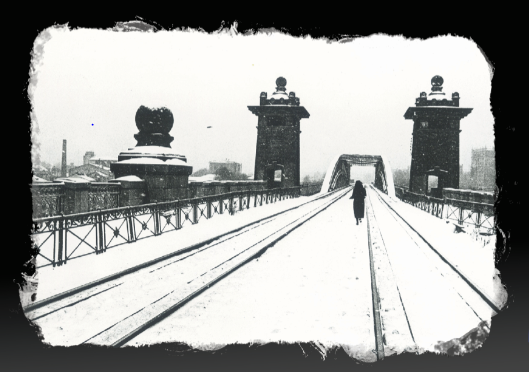
The Russian investigation, fiction and truth
Martha Peterson and TRIGON as Seen by the Russians
In her book The Widow Spy, retired CIA officer Marti Peterson describes her life and events leading up to joining the CIA, her training and assignment to Moscow, handling agent Aleksandr Ogorodnik – codename TRIGON, and her capture in July 1977 by the KGB. A year later, the Soviets published an article in Izvestia, accompanied by incriminating photographs, giving their version of this case. Translations with the photos were published immediately in newspapers and magazines around the world.
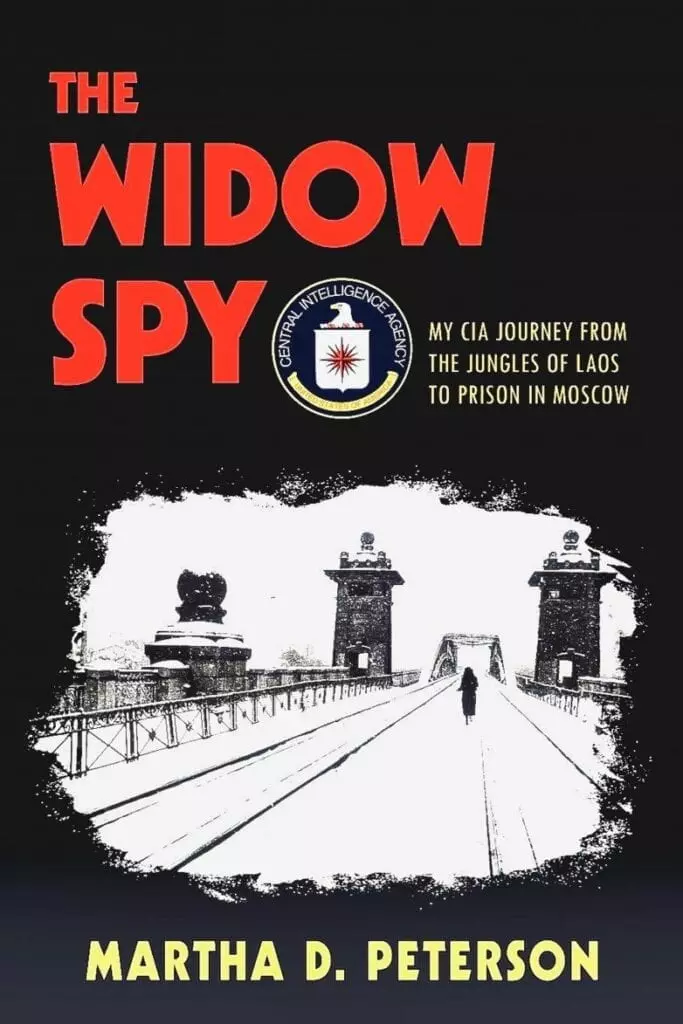
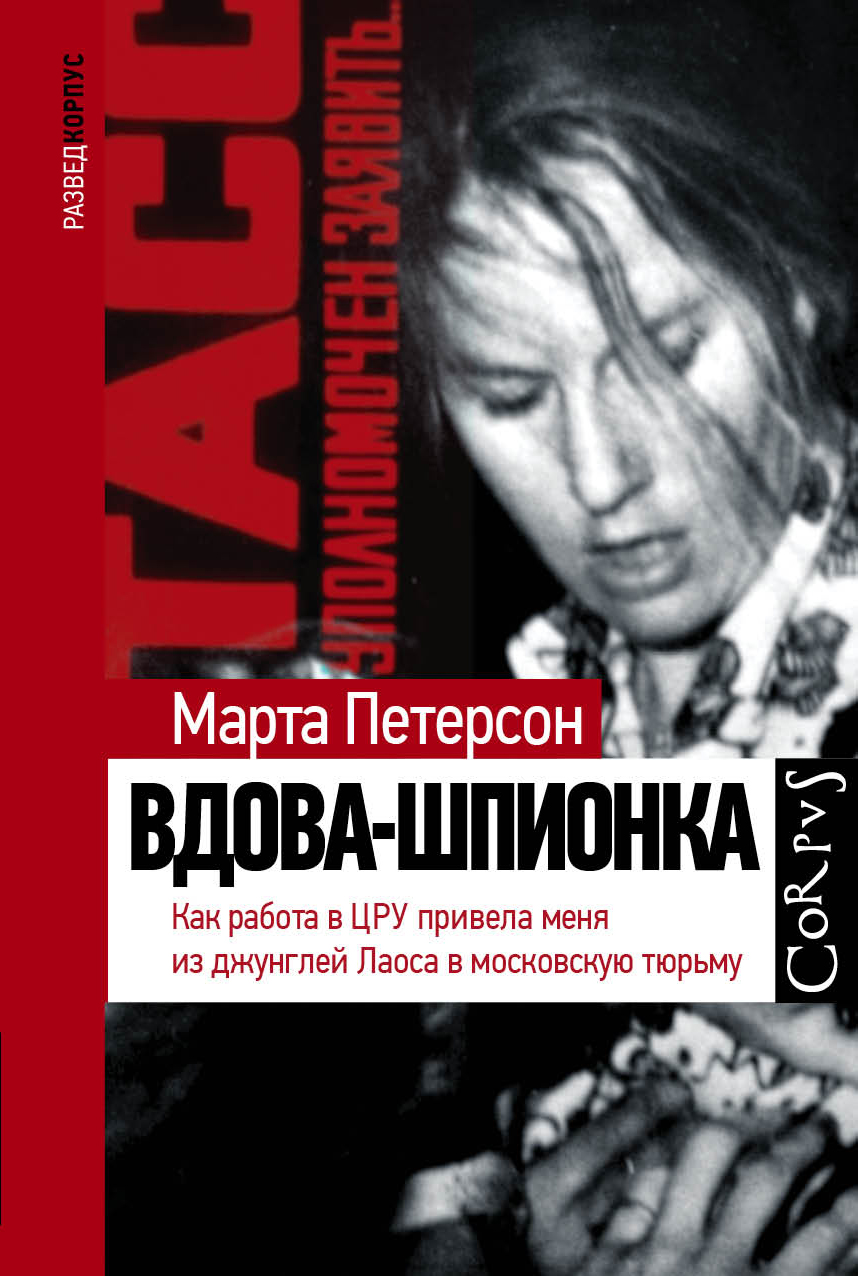
In 1979 novelist and film producer Julian Semyonov, who had access to KGB files on TRIANON (the codename was actually TRIGON), wrote TASS Is Authorized to Announce…, a fictionalized version of the actual TRIANON case. But it was not until 1984, when the 10-part Russian TV Series of the same name came out, that the “TRIANON” case became well known in the Soviet Union. It was produced by Vladimir Fokin and Semyonov and used actual KGB veterans as consultants. Over KGB objections, TASS Is Authorized to Announce was released as a a diversion for Soviet TV viewers to coincide with the opening and alternative to the 1984 Summer Olympics in Los Angeles, which the Soviet boycotted. The series was immensely popular and is still shown in re-runs in the Russian-speaking world.
In the late 90’s, following the breakup of the Soviet Union, many more details of the case appeared in Russian media. KGB officers involved in the case published articles and gave TV interviews. One veteran, Colonel Igor Peretrukhin, published a book dealing almost exclusively with the subject, Agent Codename TRIANON. Interest in this subject by Russian journalists and others has continued up to the present, and in recent years there has been commentary by Russian writers who have read The Widow Spy in English. Peretrukhin’s book and the articles provide many interesting details about how the KGB purportedly conducted the TRIGON operation, but it has a number of contradictions and errors.
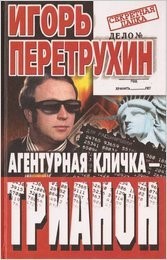
TRIGON, Not TRIANON
In his book Agent Codename TRIANON, Igor Peretrukhin stubbornly insists that the KGB had proof that CIA agent Aleksandr Ogorodnik’s real CIA codename was TRIANON, not TRIGON. This is possibly simply the matter of a mishearing by a source within the CIA. Plus KGB officers who were reluctant to admit they were wrong.
A resounding counterintelligence success for KGB or a blunder?
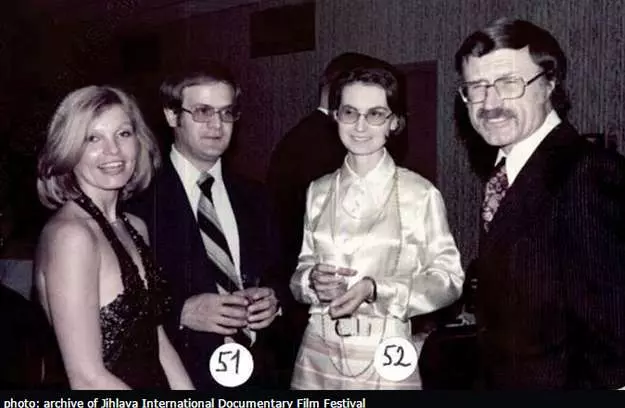
Although usually called a “resounding counterintelligence success” by the KGB, the TRIGON case was a blunder. The KGB routinely watched the American men at the embassy whom they knew or suspected were CIA officers. Martha ascertained early in her travel around Moscow that she was not being followed, and the CIA Chief of Station detailed her to handle Ogorodnik. She was eventually betrayed by double agent Karl (Karel) Koecher, a Czech double-agent “defector” who had been hired by the CIA and entrusted to handle the transcription of taped conversations between CIA officers and Ogorodnik in Bogota. Koecher reported back details which made their way to the KGB, including critical information that CIA had recruited a foreign ministry officer who was scheduled to return to Moscow in 1974. It took two and a half years before Ogoronik was caught and the KGB set up an ambush to capture Marti. They were expecting a male, and at the time of capture they had no idea who she was until they found her diplomatic card.
TV Series TASS Is Authorized to Announce
The TRIGON case is much better known in Russia than in the US. A major reason is the immensely popular 10-part Russian TV Series TASS Is Authorized to Announce…, which first appeared in summer 1984. KGB officers who had actually worked on the case were advisors for the script and filming. It gave a fictionalized account of the TRIGON case (the Soviets thought the CIA codename was TRIANON), names were changed, and the early events took place in an African country, not Colombia. The CIA villain turned out to be an elderly male, not an attractive young woman, and was caught by good detective work.
The TASS Is Authorized to Announce series is still shown on TV and available in Russian on Russian streaming sites and continues to elicit articles and commentary. Over the years much more information has become available to the Russian public, and many now know this case was not a “resounding counterintelligence success” of the KGB but a blunder, and there are a number of conspiracy theories circulating about what really happened and why. Here is one of many descriptions in Russian media, written in 2004 by Oleg Kotov in Independent Military Review:
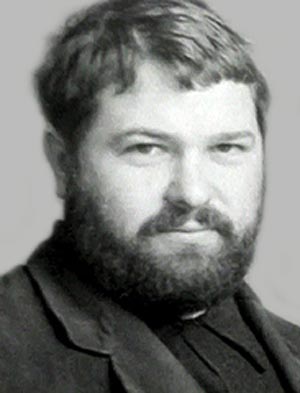
“Twenty years ago, for the first time Soviet television viewers saw the action movie TASS is Authorized to Announce, based on the novel of the same name by Yulian Semyonov, which tells the story of the KGB operation to investigate an American agent who was an employee of the Foreign Ministry, Alexander Ogorodnik, who, according to the official version, committed suicide during his arrest. Since then, the story provided the basis for a variety of articles, books, and television programs. One of the TV versions – “Secret Intelligence” – was shown last week on NTV. Strictly speaking, no secrets were revealed. As previously unknown details, it was said that Nagonia in Africa was in reality Colombia; during the covert operation, a double of Dubov-Ogorodnik was used; Martha Peterson was arrested on Krasnoluzhsky Bridge and not a male diplomat; and that the white Volga vehicle was black. However, testimony of participants and eyewitnesses to the events in the mid-1970s left huge room to reflect about their true motivation. A totally plausible version is that on the one hand, presented as a resounding counterintelligence success, the exposure of a Foreign Ministry official as a traitor primarily was intended to rid a senior party leader of an “undesirable” potential relative, and the KGB leadership – of an inevitable scandal. On the other hand, it was not at all a blunder for the Americans, who most likely intentionally gave up Ogorodnik to cover their more valuable Soviet agents.”
The senior party leader mentioned above was Konstantin Viktorovich Rusakov, a Secretary of the Central Committee CPSU USSR and father of Ogorodnik’s fiancée at the time of his death, Olga Konstantinovna Rusakova. Several others involved in the case, including double agent Karel Koecher, are also skeptical that Ogorodnik committed suicide.
Senior KGB officers present their versions
“[T]estimony of participants and eyewitnesses to the events in the mid-1970s” was given a by number of senior KGB officers from the Seventh Directorate (surveillance and protection of diplomats) and the Second Chief Directorate (SCD, counterintelligence). Some of these officers were advisors to Yulian Semyonov for his TASS is Authorized… book and TV series. Most, naturally give self-serving accounts of their activities, but others acknowledge that the KGB blundered.
- Peretrukhin, Igor Konstantinovich, KGB Lieutenant Colonel (later Colonel), retired, 7th Department of the SCD (foreigners in the USSR); attached to the Ministry of Foreign Affairs Clandestine Security Service for the period of the investigation; author of book Agent Codename TRIANON.
- Prelin, Igor Nikolayevich, retired KGB Colonel, an outspoken officer who appears in a number of articles and TV videos, including American History (Heroes) Channel’s documentary Shadow Ops. Col. Prelin sheepishly admitted that after her practical demonstration of her martial arts abilities, one of the officers “couldn’t have sex for two years.”
- Boyarov, Vitaliy Konstantinovich, retired KGB Lieutenant General, First Deputy Chief of the Second Chief Directorate (SCD, “Glavk”) of the KGB (Ret[P1] [CE2] .). Head of the investigation to catch Ogorodnik.
- Kevorkov, Vyacheslav Yervandovich, Major General KGB, Chief of the 7th Department of the SCD (for work with the MFA). Author of General Boyarov, which has a chapter called TRIANON. Prototype of KGB General Konstantinov in the novel by Yulian Semenov TASS is Authorized to Announce and the 10-part film with the same name.
- Kostyrya, Vladimir Ivanovich, Deputy, Colonel, Deputy Chief of Kevorkov’s 7th Department.
- Krasilnikov, Rem Sergeyevich, Major General KGB, Deputy Chief First Department (USA) of the SCD, expert in countermeasures against the American intelligence services of that time. He had worked in the Second Chief Directorate since 1949. From 1979 until his retirement in 1992 he was the Chief of the First American Department. Author of: “The Ghosts from Tchaikovsky Street” (Geya publishing house 1999); [Translator: Tchaikovsky Street here means the American Embassy].
- Grigorenko, Grigoriy Fyodorovich, Lieutenant General, Chief of the Second Chief Directorate 1970-1982; Responsible for the overall TRIANON operation.
- Leytan, Nikolay, Senior Lieutenant KGB, Seventh Department for Work at the Ministry of Foreign Affairs.
- Rasshchepov, Yevgeni Mikhaylovich, Major General KGB and later Lieutenant General 1960s-1997, Chief of the First Department of the Second Chief Directorate KGB USSR (Counterintelligence against USA).
- Shebarshin, Leonid V., Lt. General KGB, in late 80’s Chief of the FCD. Wrote interesting articles and authored The KGB’s Last Battle
- Zaitsev, Gennadiy Nikolayevich, General-Lieutenant KGB, assigned to 7th Directorate KGB (Surveillance), Later Commander of Spetsgruppa “A” (Alpha). Several online articles misidentify him with Vladimir Nikolayevich Zaitsev, who was assigned to his Alpha Group unit.
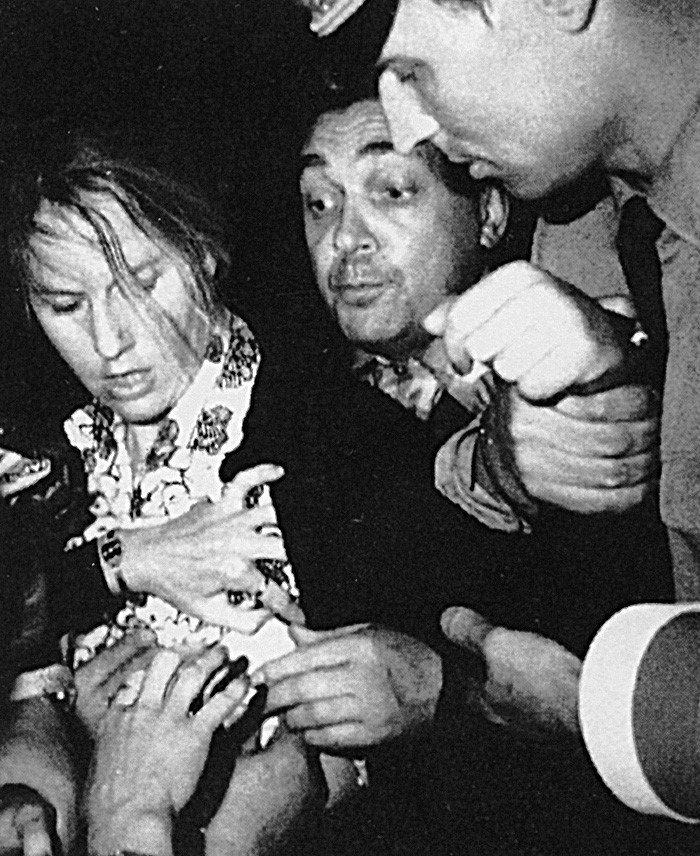
- Zaitsev, Vladimir Nikolayevich, retired as KGB colonel, born 1948, commander of 4th Section [otdeleniye] of Gennadiy Zaitsev’s Spetsnaz Alpha Group. He was praised especially for his training role. Worked in the 7th Directorate and wore a militia uniform at the ambush of Martha Peterson at the bridge, grabbed her hand, squeezed her wrist, and broke her watchband. Marti described him as handsome and spiffy in his uniform, and he sat next to her during the drive to Lubyanka. She has a famous sense of humor and decided to flirt with him and they exchanged hand squeezes. A quote from The Widow Spy:
- “Glancing down, I saw that my watchband on my left wrist had popped open in the melee. Following my eyes, the militiaman looked down. He gently adjusted and clasped the watchband. I realized then that we were actually holding hands, this young man and I. So, the devil made me do it, I squeezed his hand twice. Damned, if he didn’t squeeze back. I’m sure he was amazed that this young woman had been arrested. Could she really be a spy?”
From Wikipedia” “… CIA Spy Arrests
From 1985 to 1992, [Vladimir Nikolayevich] Zaitsev participated in operations to capture 13 spies of the CIA and intelligence units of the other Western countries. Information about US intelligence was provided by Aldrich Ames, and it was Zaitsev’s group who was considered the most preferable for capturing the them. In particular, Zaitsev took part in 1977 in the arrest of CIA spy Martha Peterson, officially the vice-consul of the US Embassy, and the detention of the recruited CIA Alexander Ogorodnik (Trianon), who committed suicide during the attempt to detain him. Zaitsev said that before the operation he dressed in the uniform of a militia officer, and during the operation grabbed Peterson’s hand and broke her wristwatch band, which contained a microphone connected to a recording device.”
Most accounts attempt to present the KGB in a favorable light and “cover up” their failure to surveil Martha Peterson. Missing the irony that they she fooled the KGB completely by playing her cover role, Peretrukhin uses character assassination to try to rationalize their failure, describing her as a party girl, alcoholic, and lady of easy virtue. However, several KGB officers even Peretrukhin could not hide a grudging respect for her professionalism and fooling them so completely.
TRIGON had a significant effect on the KGB of the late 1970’s. Failures by the KGB Seventh Directorate, in charge of surveillance of foreigners within the Soviet Union, and Second Chief Directorate and its 1st Department, responsible for counterintelligence against the Americans, changed their training techniques. …
Peretrukhin’s Book Agent Codename TRIANON
In his book Agent Codename TRIANON, Igor Peretrukhin’s gives his (and probably the official KGB) version of how they caught Foreign Ministry officer Aleksandr Ogorodnik and his CIA handler Martha Peterson. KGB Lieutenant Colonel Peretrukhin worked on the case while attached to the Ministry of Foreign Affairs (MFA) Covert Security Service, which was subordinate to the 7th Department of the Second Chief Directorate (SCD) of the KGB. Peretrukhin credits good detective work as the main reason for isolating Ogorodnik as a CIA agent and catching Martha Peterson.
Although Colonel Peretrukhin spoke of Martha Peterson in a negative and insulting manner, he unwittingly praised her skills in handling Ogorodnik by admitting the value of the intelligence gained by the CIA. He quoted Semyon Kuzmich Tsvigun, KGB Colonel General, First Deputy of the Chairman of the KGB USSR, who when addressing the comparative value of the loss of intelligence caused by Ogorodnik and Oleg Penkovsky, said that the latter was a “mangy puppy.”
Peretrukhin was also an advisor for the TV serial “TASS is Authorized to Announce… ,” an immensely popular 10-part series based on the TRIGON case. However, some key details were changed: the country of recruitment was changed from Colombia to a fictional African country, and the American CIA contact officer from the American embassy was an elderly male, not an attractive 30-year old female. And in the TV series, as in the book, the CIA case officer and the Soviet Foreign Ministry officer were caught mainly due to good detective work by dedicated KGB professionals.
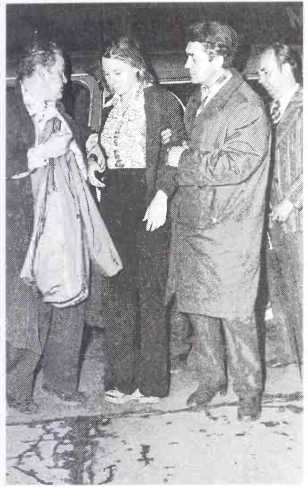
In Shadow Ops, a TV documentary series, Episode 1 “Codename: TRIGON,” included interviews with KGB Colonel Igor Prelin, who worked on the case:
- She played her cover as a “party girl” perfectly, and the KGB had no idea she was CIA so did not follow her
In Agent Codename – TRIANON, here is what Igor Peretrukhin had to say:
“Martha had appeared at the embassy rather recently. Based on the results of scrutinizing her, it was established that she arrived in the low-level position of a technical officer; her husband-officer had died in the Vietnam War. She was a woman of easy virtue and obviously addicted to alcohol. Once she was actually seen sleeping on a staircase landing of the housing quarters in a drunken state.
“During trips around the city, she did not arouse any suspicions by her behavior. A bit later she was appointed to the position of vice-consul, which guaranteed her diplomatic immunity. It was suggested that she warmed some chief in her bed, which provided her the opportunity to get a promotion. Gradually, against a background of active work by established American intelligence officers, our interest in her to a large degree was lost.”
In The Widow Spy, Martha Peterson said the KGB never watched her.
Later in his book Peretrukhin described the situation during the capture operation:
“In the evening of the same day, on July 15, 1977, the attention of the External Surveillance Service was drawn to the fact that Martha Peterson parked a Zhiguli automobile with license plate D04-589 in one of the deserted side streets near the Rossiya Cinema where at that time there was a festival of Soviet and foreign films. She left the car and went into the cinema. She was in a light white dress and the hair on her head was in a topknot. About an hour later she appeared again. After she went to her car, she sat in it for a while and then changed her clothes to dark trousers and the same jacket, let her hair down and, having transformed herself totally, she looked like one of our modest local girls. Leaving the car, she went towards Gorky Street. In accordance with the order of Operations Headquarters, further surveillance on her was terminated.
Martha Peterson says this is fiction; she did not go to a cinema that evening.
“The known CIA officers were also not surveilled that evening since it was clear that one of them would be coming to the area of the Krasnoluzhsky Bridge. The removal of surveillance was necessary as Americans had repeatedly told their agent:
“We assure you that we will come to the drop location ONLY IF THERE IS NO SURVEILLANCE.”
In his book, Peretrukhin describes her capture:
“The Capture Group, led by Kostyrya, was on the scene in two or three minutes, literally. Martha Peterson — and it was exactly she — had already gone down the steps and been seized by surveillance officers. She was frightened from surprise, but quickly collected herself and started to shout loudly to warn TRIANON, who was supposed to be somewhere nearby about the incident, and she mounted active resistance. She knew karate techniques and made a few kicks to our Department officer Lyudmila Dmitriyevna Nazarova’s groin and thigh, who had run up to conduct a personal search.” And later: “… after the struggle at the Krasnoluzhsky Bridge during detention of the American, L. D. Nazarova was compelled to ask for medical care at the KGB Polyclinic, where she underwent the necessary course of treatment.”
“Since it could not be excluded that an ampule with quick-acting poison might be hidden inside them, we also seized weighty gold charms depicting an ostrich chick and a fig on a chain of the same metal. Everything happened not without insults to our officers. But after V. I. Kostyrya gave her an appropriate reply in his good English, she drooped and stopped shouting.”
“When leaving the car, Martha saw a group of people and the camera flashes of our officers. Mistaking them for foreign correspondents, she raised her hand up and said loudly in English: “I have no problems with Soviet authorities!”
Martha Peterson says this never happened.
It was NOT Ms. “Nazarova” that Martha kicked in the groin. Rumors around Moscow at the time were that Martha Peterson had put two KGB officers in the hospital. Martha says she thought the two male KGB officers were thugs who were trying to rape her, so fought for her life, using whatever means she could against them, including Tae Kwon Do techniques.
That the kicks were not at Lyudmila Nazarova, but men, was confirmed by Colonel Igor Nikolayevich Prelin, a retired KGB officer who served in the 7th Directorate (surveillance of foreigners). Interviewed for a TV documentary series Shadow Ops/Codename: Trigon, Prelin said he ran into one of the officers whom Marti “kicked in the groin” a few years later. He confessed that after leaving the hospital “he couldn’t have sex for a couple of years.” Prelin was also adamant that it was nonsense that the KGB would not have surveilled Martha Peterson because she was a woman, since the KGB often used females in operations. Prelin is a retired KGB Colonel who served overseas tours, and has written several books (unfortunately, all in Russian).
See: Shadow Ops at https://www.youtube.com/watch?v=2DAxKsbWCcY
- Peretrukhin Got this one wrong:
“ … the US Consul in Moscow, Mr. Gross, and his wife drove very quickly to the reception room. His wife remained in the car. After introducing himself he walked into the reception room. Although he tried to hide it, he looked visibly alarmed. He had watches on the wrists of both hands. Grechayev and I were both members of the Operational Group and we assumed that one wristwatch had a recorder or a microphone which transmitted to the car where the consul’s wife was waiting.
Comment: Mr. Gross was awakened at an early hour and rushed to Lubyanka, unaware that he was wearing two watches. American technology of that time was good, but not that advanced!
And only after instructions of the Chairman of KGB of the USSR Yuri Andropov, who was at that time under treatment at the Kislovodsk Sanatorium “Red Stones,” were the gold charms with the chain which belonged to her personally and had been seized during detention returned to her, she said thanks in Russian: “Spasibo!”
- Marti spoke only English at her capture and played the “dumb tourist girl” role. If the KGB had any idea who she was, they would have been aware that she spoke excellent Russian, was listening to their conversations, and would not have spoken so freely. Russians widely assume that foreigners do not speak their language.
- Not Martha Peterson:
“… But the career of Martha Peterson did not end on this point. She worked in one of the Eastern European countries. Currently, the former “vice-consul” of the American Embassy in Moscow teaches at one of the CIA intelligence schools.
Comment: Marti never served in any Eastern European country.
- The KGB was looking for a male in an automobile, not a female on foot:
During the scheduled 28 June drop, the KGB was looking for a male and had no idea Martha walked right past them: “In fact, it turned out that the American intelligence officer, contrary to our assumptions, did not use a vehicle, but came on foot to the southern edge of the park from the Moskovskaya-Sortirovochnaya Railway Station, where, apparently, he noticed a man and an unfortunate vehicle which had nothing to do with us.”
Aldrich Ames did not recruit TRIGON
Some articles written by KGB officers involved in the TRIGON case say Aldrich Ames finalized the recruitment of Aleksandr Ogorodnik in Bogota. In his article TASS is Authorized to Announce: Through the Eyes of the CIA: How Martha Peterson Wrapped the KGB around Her Finger, Aleksey Kostenko writes:
“Conspiracy theories exist around the history of Trianon.
“For example, that the Americans deliberately “leaked” a frightened and less useful agent in order to divert attention from the still unknown more serious “moles.” Or that Ogorodnik was deliberately allowed to kill himself during the capture, so that he would not tell unnecessary details about his relationship with his new fiancée – the daughter of the Secretary of the CPSU Central Committee, Konstantin Rusakov.
“And the irony of fate is that Ogorodnik was recruited in a Turkish bath by a CIA officer named Aldrich Ames. In 1985, he himself betrayed his country, becoming the most important KGB agent in the CIA system. Ames leaked two dozen critical agents to Moscow – which is considered the biggest leak and disaster of American intelligence in the history of the Cold War.
“Betrayal is contagious.”
Aldrich Ames was not involved in the recruitment of Aleksandr Ogorodnik.
[P1]Do you want to put his history that Peretrukhin mentions? There is at least a paragraph describing his career beginning in 1945.
[CE2]I haven’t decided yet – still thinking…